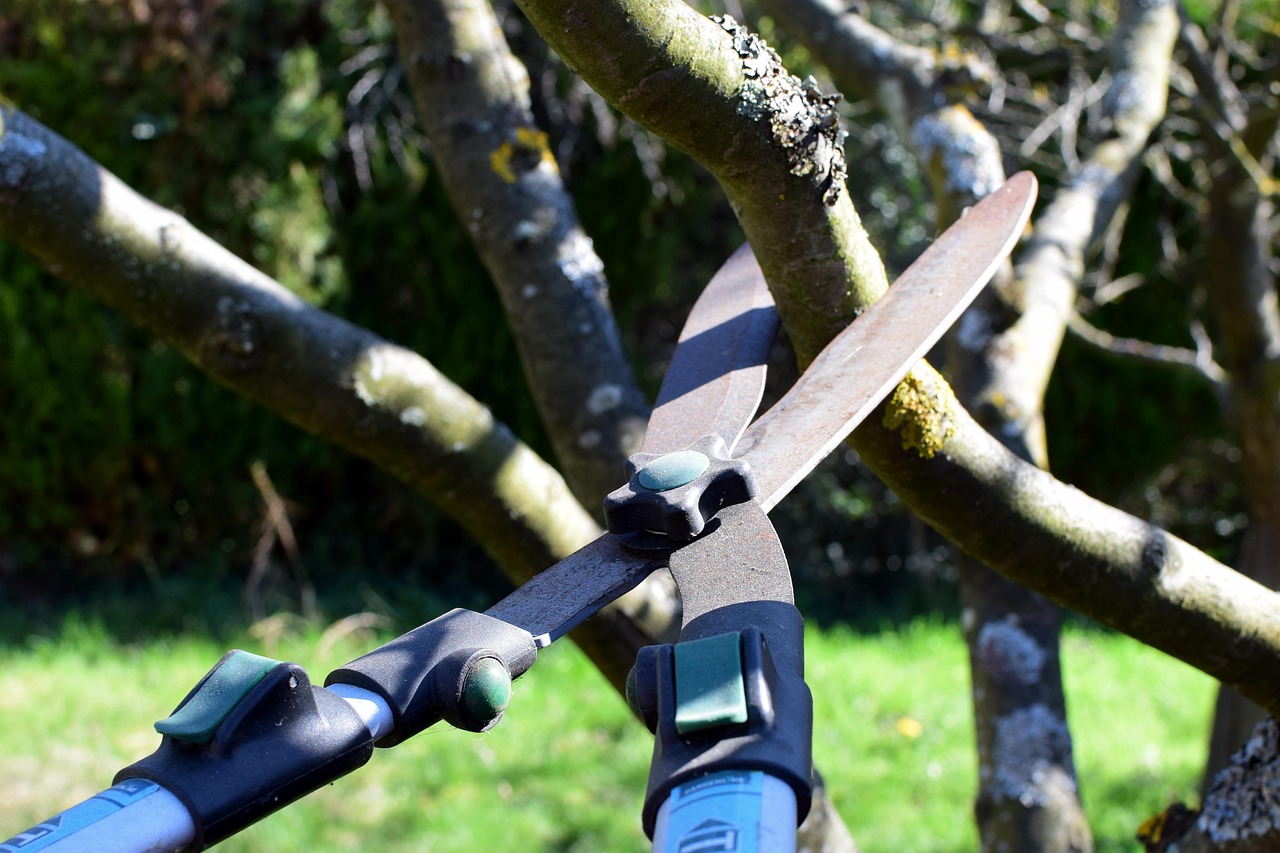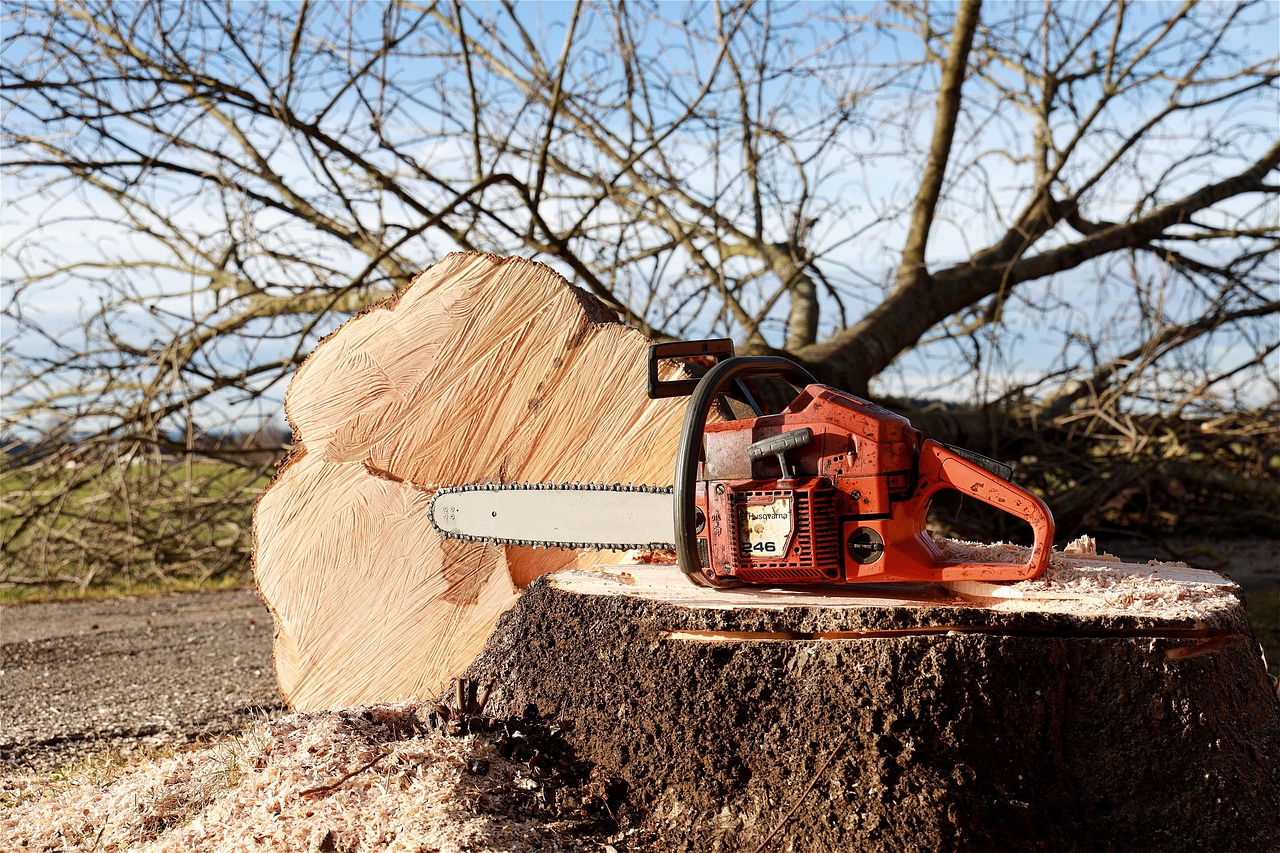Tree pruning is essential for minimizing shade over solar panels. Properly trimmed trees enhance sunlight exposure, improving solar energy efficiency. Regular maintenance ensures that trees do not obstruct solar panels, maximizing their performance and lifespan.
Understanding the Importance of Solar Panels
Solar panels are becoming increasingly popular as a renewable energy source for homes and businesses. They convert sunlight into electricity, providing an eco-friendly alternative to fossil fuels. The efficiency of solar panels largely depends on their exposure to sunlight. When trees grow too close to solar installations, they can cast shadows, significantly reducing the amount of sunlight the panels receive.

Inadequate sunlight can lead to decreased energy production, making it crucial for homeowners with solar panels to manage surrounding trees effectively. This is where tree pruning comes into play. By maintaining the right shape and size of trees near solar panels, homeowners can ensure optimal energy generation.
The Benefits of Tree Pruning
Effective tree pruning offers several advantages for solar panel efficiency. These benefits include:
- Increased Sunlight Exposure: By removing excess branches, more sunlight reaches the solar panels.
- Improved Energy Production: With enhanced sunlight exposure, the energy output of solar panels increases.
- Long-Term Cost Savings: Higher efficiency leads to lower electricity bills over time.
- Enhanced Aesthetics: Well-pruned trees contribute to a more visually appealing landscape.
- Healthier Trees: Regular pruning promotes better tree health by removing dead or diseased branches.
How Tree Pruning Works
Tree pruning involves selectively removing certain parts of a tree to enhance its structure and health. This practice can influence how much shade a tree casts over solar panels. The timing and method of pruning are crucial for maximizing sunlight exposure.

Pruning can be done in various ways, including:
- Crown Thinning: This technique removes inner branches to allow more light to filter through the canopy.
- Crown Raising: Lower branches are removed to increase the height of the tree’s canopy, reducing shade on panels.
- Crown Reduction: This method involves cutting back branches to minimize the overall size of the tree.
The Best Time for Tree Pruning
The timing of tree pruning can significantly affect both tree health and solar panel performance. Generally, the best time to prune trees is during late winter or early spring before new growth begins. During this period, trees are still dormant, which helps reduce stress on the plant.
However, specific types of trees may require different pruning schedules. It is essential to research the specific species in your area. Additionally, avoiding heavy pruning during the growing season can help protect trees from stress and damage.

Assessing Tree Growth
To effectively manage tree growth around solar panels, regular assessments are necessary. Homeowners should monitor their trees for signs of excessive growth or overhanging branches that could obstruct sunlight. Key indicators include:
- Branches that are within a few feet of solar panels.
- Dense foliage that significantly reduces light penetration.
- Uneven growth patterns that may indicate a need for corrective pruning.
Selecting a Professional Tree Service
If you are unsure about how to prune your trees effectively, hiring a professional tree service can be a wise choice. Experienced arborists understand tree biology and know how to prune safely and effectively without harming the tree or the surrounding environment.
When selecting a tree service, consider the following:

- Credentials: Verify that the company has proper insurance and certifications.
- Experience: Look for companies with a proven track record in tree pruning near solar installations.
- References: Ask for references or read customer reviews to assess their quality of work.
| Pruning Technique | Description | Best Application |
|---|---|---|
| Crown Thinning | Removing select branches to reduce weight and improve light penetration. | Dense canopies affecting solar panels. |
| Crown Raising | Removing lower branches to raise the canopy height. | Trees casting shade on roofs or panels. |
| Crown Reduction | Reducing the overall size of the tree by cutting back larger branches. | Overgrown trees threatening nearby structures. |
Proper management through tree pruning not only enhances solar panel efficiency but also contributes to the health and longevity of your trees. Regular maintenance ensures that you can enjoy the full benefits of your solar energy system while maintaining a beautiful landscape around your home.
Identifying Trees That Affect Solar Panel Efficiency
Not all trees create the same level of shade over solar panels. Some species grow taller and denser, while others may have a more open structure. Understanding which trees are likely to impact solar panel performance is essential for effective management.
Types of Trees to Monitor
When considering tree pruning, focus on the following types of trees that tend to grow tall or dense:
- Deciduous Trees: These trees shed their leaves in winter but can create significant shade during the growing season. Common examples include oak, maple, and elm.
- Evergreen Trees: These trees retain their leaves year-round and can block sunlight consistently. Species like pine, spruce, and cedar are typical examples.
- Fast-Growing Trees: Certain trees, such as willows and poplars, can grow quickly, leading to rapid shading of solar panels.
- Trees with Wide Canopies: Trees like sycamores and certain fruit trees spread wide, potentially covering large areas of solar panels.
Assessing the Impact of Shade on Solar Panels
To determine how much shade nearby trees cast on solar panels, homeowners can conduct a simple assessment. This evaluation helps in understanding the extent of shading and the urgency for pruning. Here are steps to consider:
- Evaluate Solar Panel Placement: Identify the direction in which your solar panels face. This will help in assessing which trees affect them most.
- Observe Shadows: On sunny days, observe when and where shadows fall on the solar panels. Take note of how long shade lasts throughout the day.
- Use a Shadow Mapping Tool: Several smartphone applications and online tools can help visualize shade patterns based on tree height and location.
Calculating Shade Impact
Understanding the percentage of shade cast by trees can help inform decisions about pruning. Here’s a basic method to calculate shade impact:
- Measure Tree Height: Use a measuring tape or a height estimation method to determine the average height of the tree.
- Determine Panel Area: Calculate the total area of solar panels installed on your roof or property.
- Estimate Shade Area: Measure or estimate the area of the solar panels that receive shade during peak sunlight hours.
- Calculate Percentage of Shade: Use the formula: (Shade Area / Total Panel Area) x 100 to find the percentage of shade.
The Role of Seasonal Changes
The impact of trees on solar panel efficiency can vary significantly with the seasons. Understanding these changes is vital for effective tree management.
Winter vs. Summer Shade
In winter, many deciduous trees lose their leaves, allowing more sunlight to reach solar panels. Conversely, during summer months, when trees are full of foliage, they can create substantial shade. Homeowners should consider this seasonal variation when planning pruning schedules.
Factors Influencing Seasonal Shade
- Tree Growth Rate: Rapidly growing trees may require more frequent assessments and pruning to minimize summer shade.
- Local Climate: Varying weather patterns can affect tree growth and leaf density, influencing sunlight exposure to solar panels.
- Tree Species Characteristics: Different species have unique growth habits that may affect the timing of pruning and maintenance needs.
Pruning Techniques for Optimal Results
Selecting the right pruning technique is critical for achieving desired results without harming the tree. Homeowners should consider various approaches based on tree type and growth pattern.
Specific Pruning Strategies
- Lateral Pruning: This involves trimming branches that extend horizontally towards solar panels, reducing shade while maintaining overall tree health.
- Vertical Pruning: For tall trees, removing upper branches can help lower the canopy height and decrease shading significantly.
- Topping (with Caution): Although topping is often discouraged due to potential harm to tree health, it can be used sparingly in certain cases to control height effectively. Always consult with an arborist before proceeding with this technique.
The Importance of Regular Maintenance
Regular maintenance and monitoring are essential for keeping trees in check around solar panels. Establishing a routine can help ensure ongoing efficiency for your solar energy system.
Creating a Maintenance Schedule
A proactive maintenance schedule might include:
- Annual Inspections: Conduct yearly evaluations of tree growth and its impact on solar installations.
- Seasonal Pruning: Schedule pruning sessions before major growth periods in spring and after leaf drop in autumn.
- Pest Management: Monitor for pests or diseases that could affect tree health and subsequently influence shading patterns.
Engaging with Local Arborists
If you are uncertain about managing tree pruning yourself, consider engaging with local arborists. They can provide expert advice tailored to your specific landscape needs and help you maintain compliance with local regulations regarding tree management.
By taking an informed approach to tree pruning, homeowners can enhance the efficiency of their solar energy systems while ensuring their landscapes remain vibrant and healthy.
Understanding Local Regulations and Permits
Before engaging in tree pruning, it is essential to familiarize yourself with local regulations and potential permits required for tree management. Many municipalities have specific laws regarding tree maintenance, especially for certain types of trees or those located near utility lines.
Tree Protection Ordinances
Some areas have tree protection ordinances designed to preserve natural landscapes and promote biodiversity. These ordinances may restrict how much of a tree can be pruned or dictate which species are protected. Here are some common elements to consider:
- Protected Species: Certain trees may be classified as protected, requiring special permission for any pruning or removal.
- Permitting Process: You might need to obtain a permit before performing significant pruning or removal, particularly for large trees.
- Tree Replacement Requirements: In some jurisdictions, if a protected tree is removed, homeowners may be required to plant a new tree as a replacement.
Consulting Local Authorities
Before undertaking tree pruning, consult with local authorities or the city’s forestry department. They can provide valuable information about:
- The specific regulations in your area regarding tree pruning.
- Any necessary permits you must obtain before beginning work.
- Resources for finding qualified arborists familiar with local laws.
Tools and Equipment for Tree Pruning
Having the right tools is crucial for effective tree pruning. Proper equipment not only makes the job easier but also ensures that cuts are clean and less harmful to the tree. Below is a list of essential tools commonly used in tree pruning:
Essential Pruning Tools
- Pruning Shears: Ideal for cutting small branches and stems up to ¾ inch in diameter.
- Loppers: Useful for cutting thicker branches (up to 2 inches) with long handles for increased leverage.
- Saws: A hand saw or pole saw can handle larger branches that cannot be cut with shears or loppers.
- Chainsaw: For very large branches or even tree removal, a chainsaw may be necessary, but it requires caution and experience to use safely.
- Safety Gear: Always wear gloves, goggles, and a hard hat to protect yourself while pruning.
Maintenance of Pruning Tools
Keeping your tools in good condition is just as important as having the right ones. Here are some maintenance tips:
- Sharp Blades: Regularly sharpen blades to ensure clean cuts, promoting faster healing for the tree.
- Cleansing Tools: Clean tools after each use to prevent the spread of disease between trees.
- Inspect for Damage: Check tools for any signs of wear or damage and replace them as needed.
Best Practices for Tree Pruning
Implementing best practices during the pruning process will help protect both the tree and solar panels. Follow these guidelines to ensure effective and safe pruning:
Pruning Techniques to Employ
- Cutting at the Right Angle: Always make cuts at a slight angle to allow water to run off, preventing rot.
- Avoiding Topping: Resist the temptation to top trees, as this can lead to poor growth and health issues.
- Making Clean Cuts: Use sharp tools to make clean cuts, reducing stress on the tree and facilitating faster healing.
- Removing Dead or Diseased Wood: Prioritize removing branches that are dead or show signs of disease to maintain overall tree health.
Timing Your Pruning
Timing is a crucial factor in effective pruning. Here are some tips on when to prune different types of trees:
- Deciduous Trees: Best pruned during dormancy in late winter or early spring before new growth begins.
- Evergreen Trees: Prune these trees in late spring or early summer after new growth has hardened off.
- Flowering Trees: Timing depends on the type; prune spring-blooming trees right after flowering and summer-blooming trees in late winter.
The Impact of Tree Pruning on Solar Panel Performance
Understanding how tree pruning influences solar panel performance is vital for homeowners looking to maximize their energy production. The relationship between tree height, canopy density, and solar exposure can significantly affect energy output.
Shadow Length and Angle
The angle and length of shadows cast by trees change throughout the day as the sun moves across the sky. Homeowners should consider the following when assessing shade impact:
- Noon Shadows: Typically the shortest shadows occur at noon when the sun is highest; this is when shading can be most detrimental to solar panels.
- Seasonal Variations: Trees may cast longer shadows in winter due to the lower angle of the sun compared to summer.
- Dusk and Dawn Effects: Shadows during early morning and late afternoon may also affect solar efficiency but are usually less impactful than noon shading.
The Relationship Between Tree Canopy Density and Energy Output
A denser tree canopy can block more sunlight from reaching solar panels. Studies indicate that even partial shading can lead to significant reductions in energy output. Here are key points to consider:
- PANEL EFFICIENCY: Solar panels generally operate less efficiently when shaded. Even a small amount of shade can drastically reduce their output.
- SYSTEM PERFORMANCE MONITORING: Homeowners should regularly monitor energy performance data from their solar systems to identify any drops in efficiency that may correlate with tree growth.
- TREE GROWTH RATE TRACKING: Keeping track of tree growth rates helps assess when pruning is needed to maintain optimal sunlight exposure.
This proactive approach to managing trees around solar panels ensures both the health of your landscape and the efficiency of your renewable energy system.
Maintaining a Sustainable Landscape
Tree pruning is not only about minimizing shade over solar panels; it is also about maintaining a healthy and sustainable landscape. A well-managed landscape can improve property aesthetics, enhance biodiversity, and contribute positively to the environment.
Benefits of a Healthy Tree Canopy
While it is important to manage tree growth to protect solar panels, maintaining a healthy tree canopy offers several benefits:
- Air Quality Improvement: Trees play a vital role in filtering pollutants from the air, contributing to cleaner air and a healthier environment.
- Wildlife Habitat: Properly managed trees can provide habitats for various species, promoting local biodiversity.
- Temperature Regulation: Trees help to cool urban areas, reducing the heat island effect and lowering energy consumption for air conditioning.
- Stormwater Management: Tree roots help absorb rainwater, reducing runoff and minimizing the risk of flooding.
Incorporating Native Trees
Choosing native trees for your landscape not only supports local wildlife but also requires less maintenance. Native species are adapted to the local climate and soil conditions, making them more resilient against pests and diseases. Here are some native tree options that could enhance your landscape:
- Red Maple: A versatile tree that provides beautiful fall color and attracts various wildlife.
- Eastern Redbud: Known for its stunning spring blooms, it adds aesthetic value and supports pollinators.
- River Birch: Ideal for wet areas, it helps with stormwater management and provides habitat for birds.
- Pawpaw: This small tree produces unique fruit and attracts butterflies, making it a great addition to a diverse landscape.
Solar Panel Technology Advances
As solar technology continues to evolve, new innovations may help mitigate the effects of shading caused by trees. For instance, advancements in solar panel efficiency mean that panels are becoming more effective even in low-light conditions. Homeowners should stay informed about these advancements:
- Bifacial Solar Panels: These panels can capture sunlight from both sides, improving performance even when partially shaded.
- Smart Solar Inverters: Advanced inverters can optimize energy production by adjusting to varying light conditions.
- Tracking Systems: Solar tracking systems can adjust the angle of solar panels throughout the day to maintain optimal sunlight exposure.
Evaluating Your Solar Investment
Investing in solar panels is a significant decision. Homeowners should regularly evaluate their solar energy systems to ensure they are receiving maximum benefits. Key factors to assess include:
- Energy Production Reports: Review how much energy your system generates compared to expected output.
- Maintenance Records: Keep track of any maintenance performed on both the solar panels and surrounding trees.
- Utility Bills: Compare your utility bills before and after solar panel installation to measure savings effectively.
Final Thoughts
Tree pruning to minimize shade over solar panels is an essential practice for homeowners looking to maximize their energy production while maintaining a healthy landscape. Understanding the relationship between trees and solar panel efficiency helps homeowners make informed decisions regarding tree management. Regular monitoring, appropriate pruning techniques, and awareness of local regulations are key components of effective tree care.
Moreover, embracing sustainable practices such as incorporating native species into your landscape not only enhances the beauty of your property but also supports local ecosystems. As technology continues to improve solar efficiency, homeowners can enjoy the dual benefits of renewable energy and vibrant green spaces.
By taking a proactive approach to tree pruning and solar system maintenance, you can ensure that your home remains an efficient energy producer while contributing positively to the environment. Ultimately, a well-balanced relationship between nature and technology can lead to a more sustainable future.
